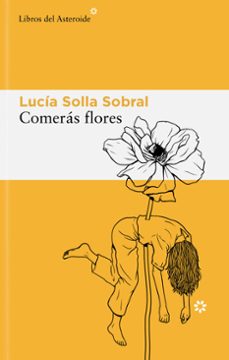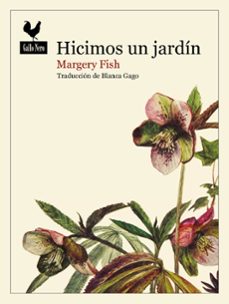Imprescindibles
Más vendidos Libros más leídos eBooks más leídos Todos los libros Todos los libros Autores destacados Series y sagas
Recomendados Libros recomendados Autores destacados Libros que inspiran Vidas con historia LGTBIQ+ English books
Ficción
Literatura Contemporánea Estudios literarios Clásicos Cuentos Poesía Teatro Libros de bolsillo Sagas literarias
Géneros literarios Novela romántica y erótica Novela negra Novela histórica Narrativa fantástica Novela de ciencia ficción Novela de terror Narrativa de humor Narrativa de viajes
No Ficción
Ciencias y tecnología Biología Ciencias Ciencias naturales Divulgación científica Informática Ingeniería Matemáticas Medicina Salud y dietas Formación Idiomas Estilo de vida Libros de Cocina Guías de viaje Narrativa de viajes Deportes Libros de Juegos Manualidades
Humanidades Autoayuda y espiritualidad Ciencias humanas Derecho Economía y Empresa Psicología y Pedagogía Filosofía Sociología Filología Biblioteconomía Estudios filológicos Estudios lingüísticos Estudios literarios Historia y crítica de la Literatura
Infantil
Juvenil
#Jóvenes lectores Narrativa juvenil Clásicos adaptados Libros Wattpad Libros Booktok Libros de influencers Libros de Youtubers Libros Spicy Juveniles Libros LGTBIQ+ Temas sociales Libros ciencia ficción Libros de acción y aventura Cómic y Manga Juvenil Cómic Juvenil Manga Shonen Manga Shojo Autores destacados Jennifer L. Armentrout Eloy Moreno Nerea Llanes Hannah Nicole Maehrer
Libros de fantasía Cozy Fantasy Dark academia Hadas y Fae Romantasy Royal Fantasy Urban Fantasy Vampiros y hombres lobo Otros Misterio y terror Cozy mistery Policiaca Spooky Terror Thriller y suspense Otros
Libros románticos y de amor Dark Romance Clean Romance Cowboy Romance Mafia y amor Romance dramatico Romance dramatico Romcom Sport Romance Otros Clichés Enemies to Lovers Friends to Lovers Hermanastros Slow Burn Fake Dating Triángulo amoroso
Cómic y Manga
Novela gráfica Novela gráfica americana Novela gráfica europea Novela gráfica de otros países Personajes, series y sagas Series y sagas Star Wars Superhéroes Cómics DC Cómics Marvel Cómics otros superhéroes Cómics Valiant
eBooks
Literatura Contemporánea Narrativa fantástica Novela de ciencia ficción Novela de terror Novela histórica Novela negra Novela romántica y erótica Juvenil Más de 13 años Más de 15 años Infantil eBooks infantiles
Humanidades Autoayuda y espiritualidad Ciencias humanas Economía y Empresa Psicología y Pedagogía Filosofía Historia Historia de España Historia Universal Arte Cine Música Historia del arte
Ciencia y tecnología Ciencias naturales Divulgación científica Medicina Salud y dietas Filología Estudios lingüísticos Estudios literarios Historia y crítica de la Literatura Estilo de vida Cocina Guías de viaje Ocio y deportes
Margery Fish
Margery Fish (1888-1969) pasó la mayor parte de su vida en Londres antes de mudarse a Somerset. Fue colaboradora activa de las revistas 'Amateur Gardening' y 'The Field'. Como voluntaria de la Cruz Roja Británica, abrió su jardín al público para recaudar fondos que luego donó a esta asociación y otras organizaciones benéficas.
Recibe novedades de MARGERY FISH directamente en tu email
Filtros
Del 1 al 5 de 5
Gallo Nero Ediciones 9788419168498
«Todos tenemos mucho que aprender, y cada nuevo jardín encierra una nueva oportunidad de hallar inspiración. Aunque nos sepamos de memoria un jardín, el año tiene doce meses, y cada mes ofrece un jar
Ver más
Tapa blanda
GALLO NERO 9788419168535
«Todos tenemos mucho que aprender, y cada nuevo jardín encierra una nueva oportunidad de hallar inspiración. Aunque nos sepamos de memoria un jardín, el año tiene doce meses, y cada mes ofrece un jar
Ver más
eBook
Batsford 9781849949613
First published in 1956, We Made a Garden is the story of how Margery Fish, the leading gardener of the 1960s, and her husband Walter transformed an acre of wilderness into a stunning cottage garden, still open to the public at East Lambrook Manor, Somerset, England. This is now one of the most important books on gardening ever written. A beautiful and timeless book on creating a garden.Margery Fish turned to gardening when she was in her mid-forties and went on to develop the whole concept of a cottage garden. She had a love of flowers coupled with a passion for nature and made an intensive research into the traditionally grown plants with which cottage gardens in Britain were once so densely planted. In this classic owrk, she recounts the trails and tribulations, successes and failures, of her venture with ease and humour. Topics covered are colourful and diverse, ranging from the most suitable hyssop for the terraced garden through composting, hedges, making paths to the best time to lift and replant tulip bulbs. Her good sense, practical knowledge and imaginative ideas will encourage and inspire gardeners everywhere.
Ver más
eBook
Batsford 9781849941051
The garden to strive for is one that has no off-moments but is interesting and attractive whatever the time of year. So says Margery Fish in her introduction to the original edition of this book. In the 21st century this may seem like stating the obvious but in 1958 it was a more surprising notion. The strength of this book is that it proves the point. Starting as a gardening journalist then gaining a reputation as a lecturer, Margery caught the attention of more gardeners, and made a more lasting impact, with her first book, We Made a Garden. Having completed the tribute to her late husband, in this, her second book, she set out in detail how to achieve her aim of a garden that looks good all the year round. This is a confident Margery Fish, making her own garden in her own way and writing about it with natural enthusiasm to help gardeners break away from the traditional idea of empty and desolate gardens in winter. In particular she focuses on the plants themselves, highlighting those that can be relied upon to flower in winter, on evergreen foliage plants that fill the garden with long-term interest, and on plants with unusually long seasons of colour. Recognising that the period from autumn through to the bulbs of spring is the most difficult time for most gardeners planning an all-the-year garden, Margery highlights hellebores and hardy cyclamen, plants which in the 1950s were not considered particularly significant. Through her persuasive prose, based as ever on her own experiences at East Lambrook Manor, she raises them to the first rank. She also stirred interest in heathers as winter flowers, in peat gardening, and her infectious delight in collecting plants, like hellebores and the old hose- in-hose primroses, still delights us. And all the while, her own appreciation of the way her plants grew and her understanding of how to encourage them to give their best adds fundamental horticultural wisdom to her natural enthusiasm for the plants themselves. This is a book that changed the way we garden.
Ver más
eBook
Batsford 9781849941075
Margery Fish was the voice of gardening in the 1960s and her advice and enthusiasm for horticulture has stood the test of time. In her imaginative adaption of the traditional cottage garden style that she saw disappearing around her, she brought together old-fashioned plants and contemporary plants in the same vein.Todays mixed borders are a direct descendant of the style Margery Fish created at East Lambrook Manor in Somerset, now once again open to the public. Cottage Garden Flowers covers plants that grow easily and naturally in our soil, including easy, adaptable pubs, perennials and shrubs, such as Astrantia, columbines, daffodils, daisies, Dianthus, foxgloves, hollyhocks, Japonica, old roses, Phlox, Primula, or Virburnum. No longer in danger of being forgotten, these traditional flowering plants have now res-established their place at the heart of garden design. Graham Rice, the widely published gardening author and the former London Evening Standard gardening correspondent, has reviewed the plant names in the original text, providing a plant name section at the back of the book. This allows readers to identify current plants from the old Latin names within the text.
Ver más
eBook
Del 1 al 5 de 5





























